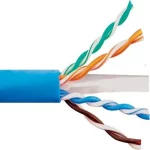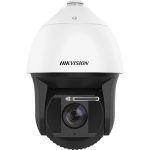Why and where to use Cat6a cabling
Cat6a cabling is an enhanced version of the standard Cat6 cabling, it is designed to support higher bandwidth and faster speeds than regular Cat6 cabling. It is typically used in situations where high-speed data transfer is required, such as in data centers, server rooms, and other network-intensive environments.
Cat6a cabling is typically used in the following situations:
- Data centers: Data centers require high-speed data transfer to support large amounts of data and multiple users. Cat6a cabling is able to support 10 Gbps speeds, which is necessary for data centers that handle large amounts of data traffic.
- Server rooms: Server rooms also require high-speed data transfer to support multiple servers and users. Cat6a cabling is able to support 10 Gbps speeds, which is necessary for server rooms that handle large amounts of data traffic.
- Network-intensive environments: Cat6a cabling is designed to support high-speed data transfer, making it suitable for use in other network-intensive environments such as video production studios, research facilities, and other facilities that require high-speed data transfer.
- Future-proofing: Cat6a cabling can support speeds of up to 10 Gbps, which is twice as fast as the regular Cat6 cabling. This makes it a good choice for businesses that want to future-proof their network infrastructure and be able to upgrade to faster speeds in the future.
- Distance: Cat6a cabling can support longer cable runs than regular Cat6 cabling. It’s also less affected by alien crosstalk, which is when signals from one cable interfere with the signals of another cable. This makes it suitable for installations where longer cable runs are required.
In summary, Cat6a cabling is typically used in data centers, server rooms, and other network-intensive environments where high-speed data transfer is required
Cat6a vs Cat6
Cat6a and Cat6 are both types of copper cabling used for Ethernet networks, but there are some key differences between them.Difference
- Speed: Cat6a is designed to support faster speeds than Cat6. While Cat6 is rated for speeds of up to 10 Gbps, Cat6a is rated for speeds of up to 10 Gbps and is capable of supporting frequencies up to 500 MHz. This means that Cat6a is able to handle more data traffic than Cat6.
- Distance: Cat6a is also capable of supporting longer cable runs than Cat6. Cat6a is designed to support runs of up to 100 meters (328 feet) while Cat6 is designed to support runs of up to 55 meters (180 feet)
- Alien Crosstalk: Alien Crosstalk (AXT) is the electromagnetic interference between cables in a bundle. Cat6a cables are more resistant to AXT than Cat6 cables.
- Bandwidth: Cat6a cables have a higher bandwidth than Cat6 cables, which means that they can handle more data at once.
- Shielding: Cat6a cables are typically shielded to protect them from electromagnetic interference and to minimize crosstalk.
- Overall, Cat6a is generally considered to be an upgrade over Cat6, as it is designed to support faster speeds, longer cable runs, and is more resistant to crosstalk. However, it is more expensive than Cat6.





